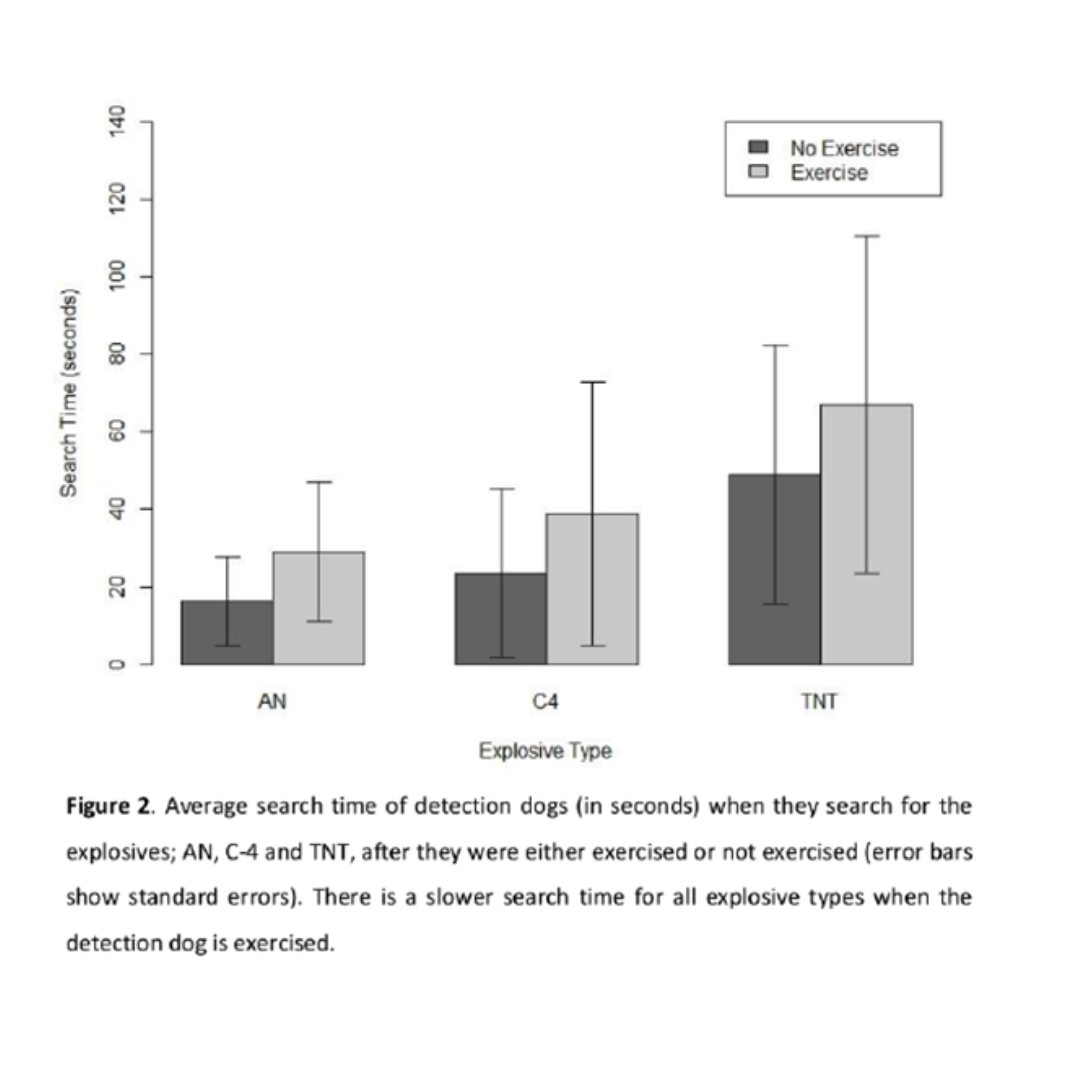Not to be Sniffed at: Exercise Affects Search Times and Search Success for Explosives Detection Dogs
‘Explosives detection dogs’ search success and performance is negatively affected by exercise versus searching with no exercise beforehand highlighting the need for adequate rest when working’
This study was completed as part of Elle Judd’s studies for a BSc (Hons) degree in Animal Behaviour at the University of Chester. Supervised by Emmeline Howarth, Judd’s thesis placed third in the BSAS Undergraduate Thesis of the Year award.
Detection dogs are most commonly used to detect explosives, with an increased global demand for their services due to the international risk of terrorism. Working in challenging environments, previous research has indicated that a rise in panting frequency can hinder their olfactory abilities.
Judd aimed to measure the search time and search success of explosive detection dogs hypothesising that exercise will influence search performance.
Eleven explosives detection dogs (eight labradors; three springer spaniels) aged one to two years old were studied. Using a repeated measures design, samples of three types of explosives (AN, C4 and TNT) were hidden in separate locations and data was recorded for search time, pulse rate and body temperature for each dog - for searching without exercise and searching after five minutes of exercise.
Judd found that the mean search time when exercised was 44.91 seconds whereas, with no exercise, the mean search time was 29.58 seconds with exercise having a significant effect on search time. The type of explosive also had a significant effect on search time – dogs were 2.57 times faster to alert on ammonium nitrate versus TNT and 1.86 times faster to alert on C4 than TNT.

In terms of search success, exercise also had a significant effect on search accuracy with dogs 1.14 times more likely to find explosives without exercise than after exercise.
After no exercise, dogs were 100% successful at finding all C4 and ammonium nitrate hides, and 95.4% successful in finding TNT hides. After exercise, dogs were still 100% successful in finding ammonium nitrate hides but 90.91% successful in finding C4 hides and 68.18% in finding TNT hides. Notably, no false indications occurred in any of the trials.
Judd indicates limitations to their study in the sample size and breed bias towards labradors; however, they represent commonly employed detection breeds and steps were taken to combat this such as the repeated measures design. Multiple trainers were also used for the trial however dogs were familiar with their handlers at testing and training methods did not vary drastically.
Judd’s study emphasises the importance of providing detection dogs with frequent opportunities to rest, both in the interests of welfare and to maintain search success and performance. The study also provides excellent suggestions for further research into the link between panting and search performance and research into methods of acclimatisation training to help mitigate the impacts of challenging environments on search performance.
Summarised by Sophie Park, Lecturer at University Centre Reaseheath
Paper: The Effect of Physical Exercise on the Performance of Explosives Detection Dogs (Judd, 2024)
